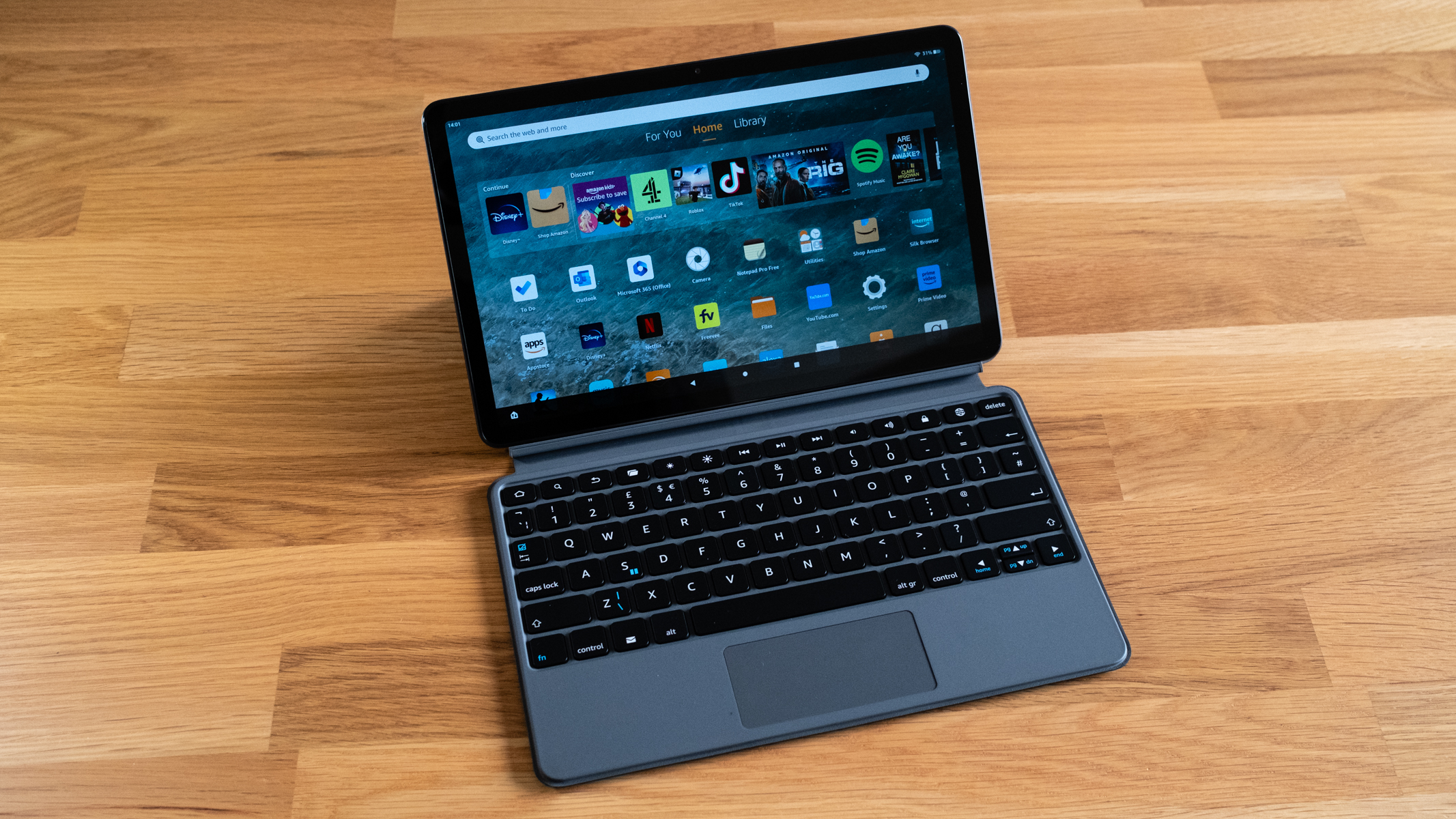
Amazon is well-known in the tablet world for producing affordable devices that maximize the benefits of Amazon Prime subscriptions. The Amazon Fire Max 11 is the most powerful and expensive Fire tablet to date, and it’s also the best. The Fire Max 11 is a 13th-generation 2023 model boasting a crisp and clear 11-inch screen and a contemporary design that makes the Fire Max 11 look and feel like a high-quality device.
Overall performance is perfect for everyday web browsing, watching videos using streaming services, and also for productivity tasks when paired with office and other productivity apps. But the major frustration with all Fire tablets, including the Fire Max 11 which is the flagship model, is that the Amazon Appstore is extremely limited when it comes to app availability; despite being built on Android, the Fire Max 11 has no access to the extensive Google Play Store.
This is going to be a huge hurdle for many potential users of the device because you’re limited to what Amazon has curated for you in terms of apps, and the App Store feels almost like a ghost town. However, if you’re a Prime subscriber or subscribe to Audible or Kindle Unlimited, the Fire Max 11 is by far the best Fire tablet for accessing this content alongside the likes of Netflix and Dsiney+.
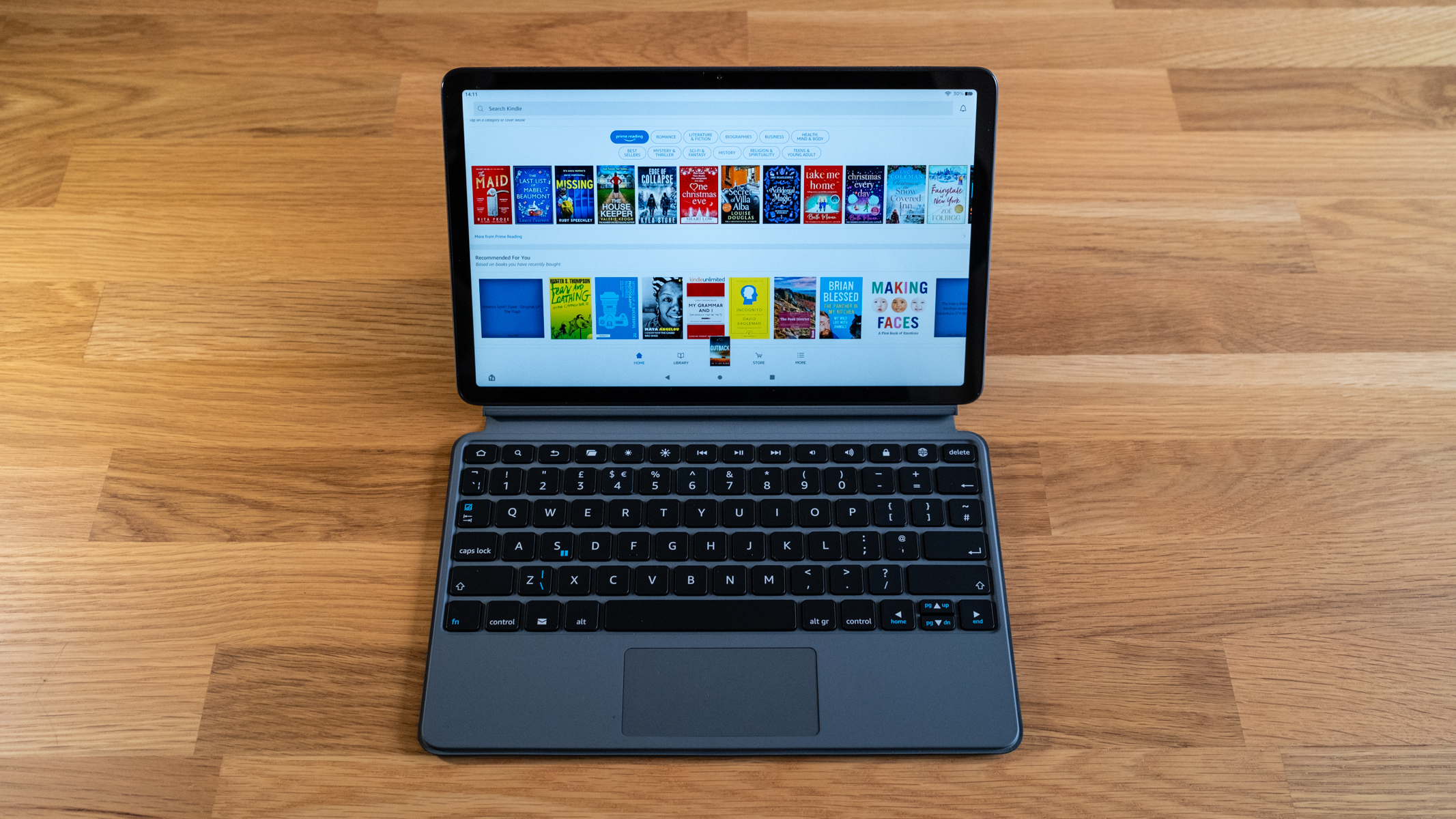
Amazon Fire Max 11: Specifications
Amazon Fire Max 11: Price & Availability
The Amazon Fire Max 11 is available with 64GB or 128GB of storage and can be purchased device only or in one of several bundles. Plus, there are options for ads or to be ad-free on the home screen and it’s barely more expensive to go ad-free. The 64GB Fire Max 11, a device only with home screen ads, costs $195 / £250. The Productivity Bundle, which includes the Fire Max 11, Keyboard Case, and Stylus Pen costs $305 / £375 and is the bundle that was sent for review. It’s a good price for the performance of the tablet, but you can enjoy equally good performance with access to the Google Play store and many more apps with competitor tablets.
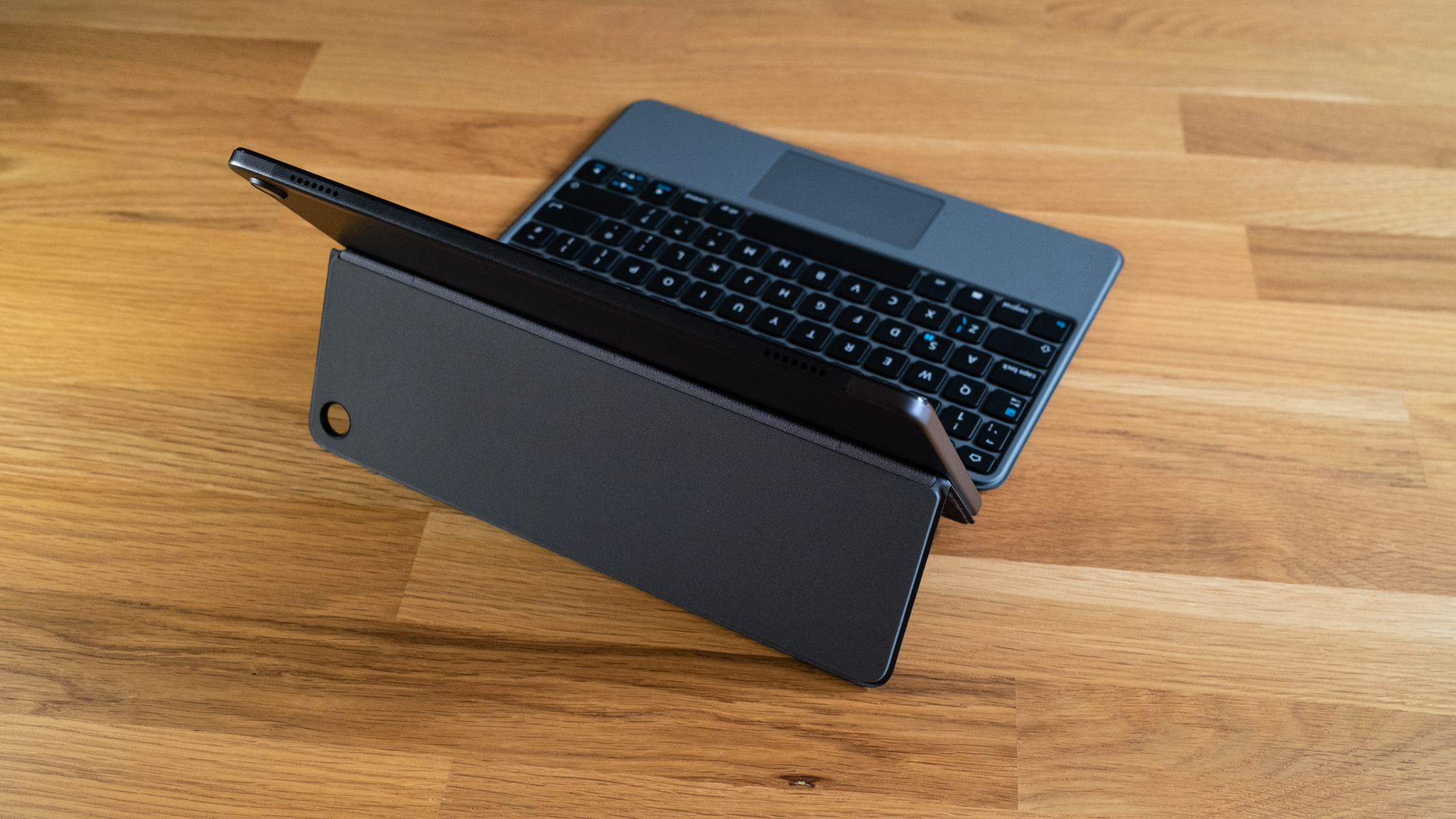
Amazon Fire Max 11: Design & Handling
The Fire 11 Max looks great with a contemporary design – it’s undoubtedly a smart-looking device that looks as good as more expensive competitor tablets. The body is made of aluminium while the screen is made of strengthened glass that’s claimed to be three times as durable as the iPad 10.9-inch 10th generation model. It all sounds promising, but the latter hasn’t been tested for obvious reasons, so we’ll have to take Amazon’s word for it.
Overall, it’s a Svelte design for a tablet of this size, and the Fire Max 11 is comfortable to hold with flat sides and curved corners. At just 17.28oz / 490g it’s it’s also fairly lightweight for a tablet with an 11-inch 16:9 screen. The bezel around the screen is nice and narrow which adds to the modern look, but also means most of what you’re looking at is the all-important 2000x1200 213ppi screen rather than a small screen surrounded by a thick black bezel, which is an outdated tablet design. So, that’s a generous amount of screen real estate when the tablet is 10.2x6.4x0.29in / 259.1x163.7x7.5mm.
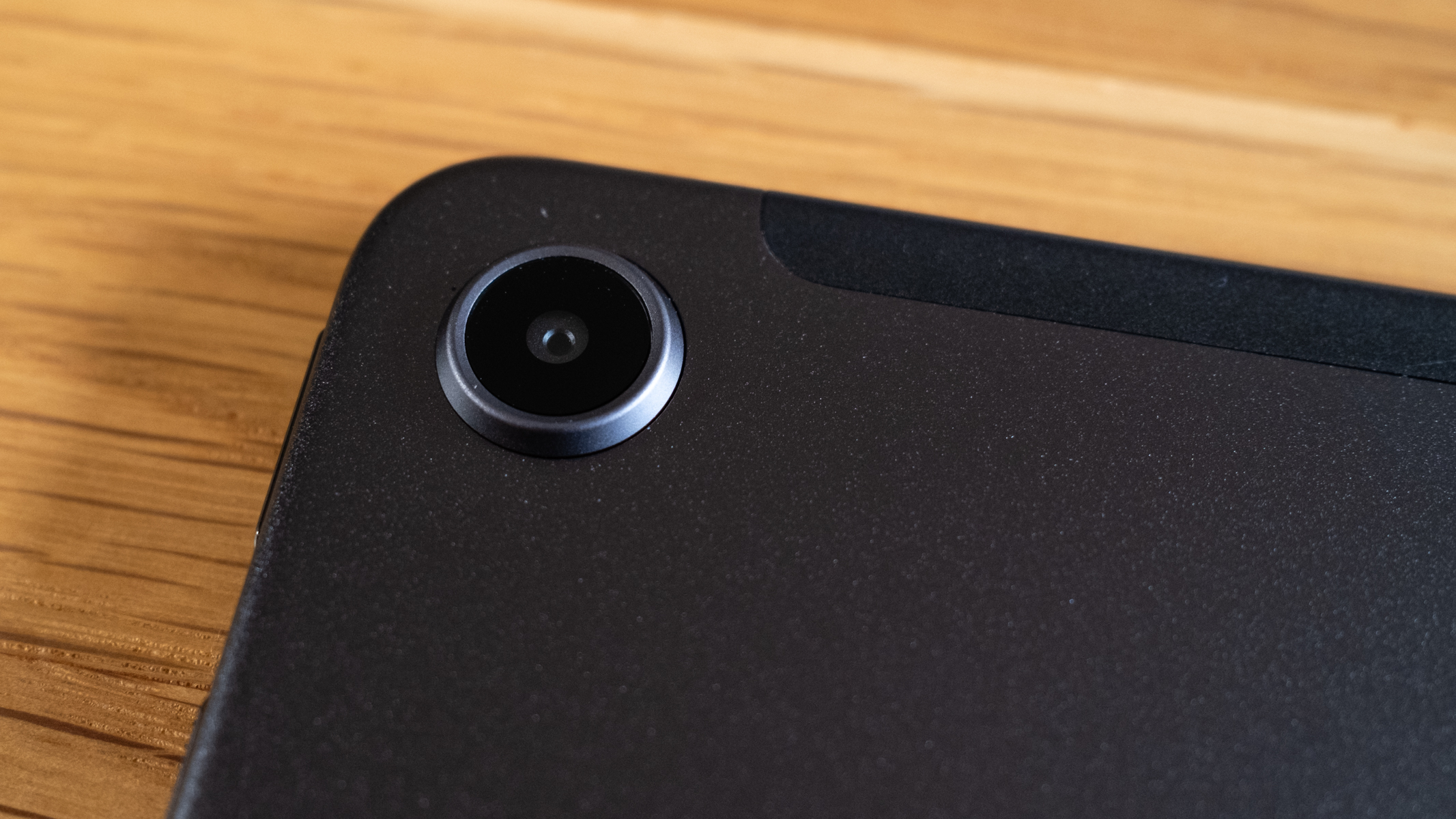
The screen itself provides great image quality thanks to the resolution, producing a sharp and vibrant image whether you’re watching a movie or typing an email, etc. There are certainly no complaints in this area, and when used with the Keyboard Case, the back of the Fire Max 11 and the screen are protected from damage. This is a high-quality case that connects to the tablet magnetically, with the keyboard attaching to the pogo pin connection at the bottom of the tablet and the half-folding rear section to create a stand simply attaching to the back.
The Keyboard Case and Stylus pen both work exceptionally well, providing a more laptop-like experience with the multi-touch trackpad and physical keys for typing. The Stylus Pen allows you to write notes and draw depending on what apps you have for this, and handwriting recognition is impressive – it could read my almost unintelligible scrawl without any problems using a free note app.
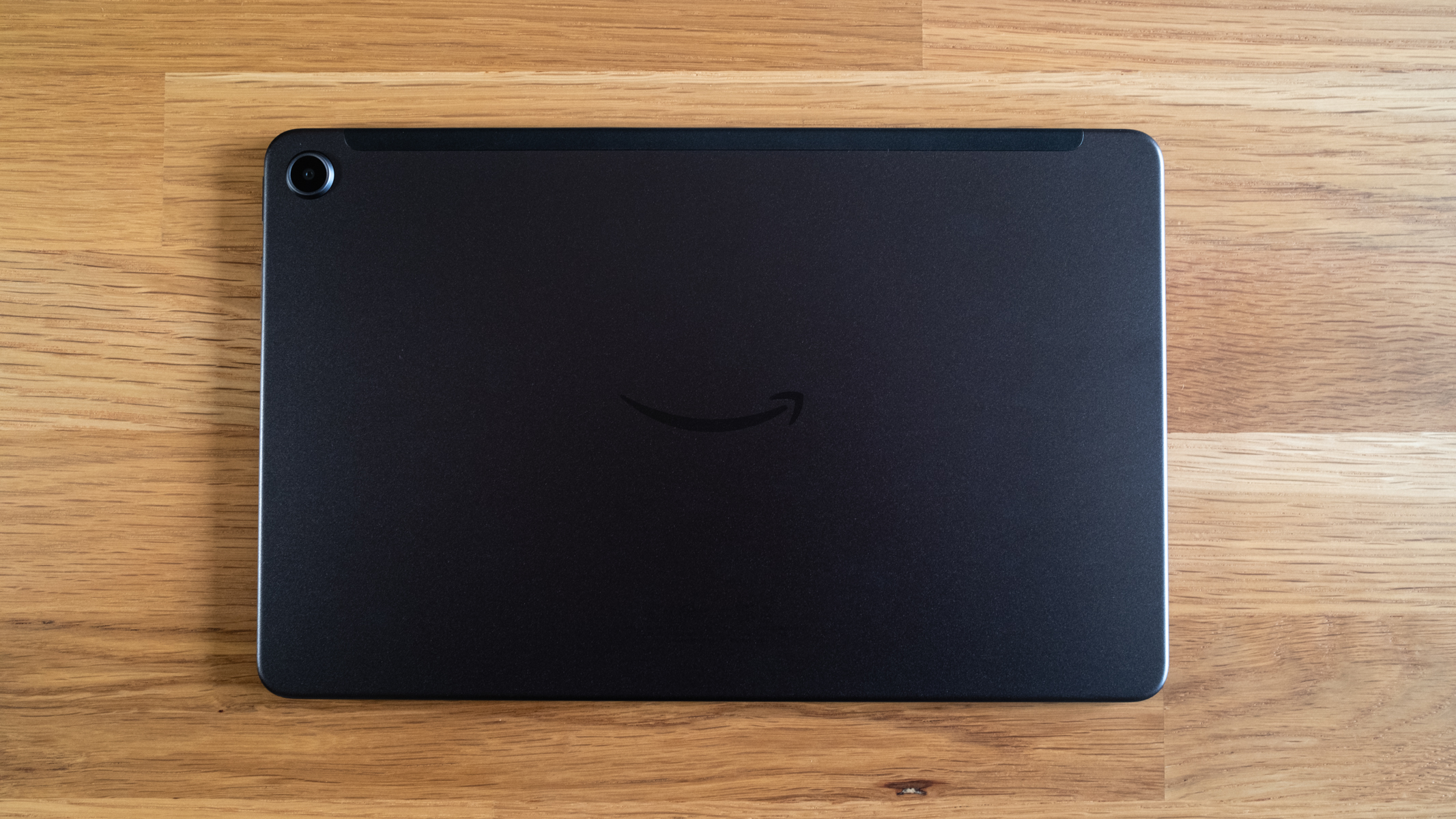
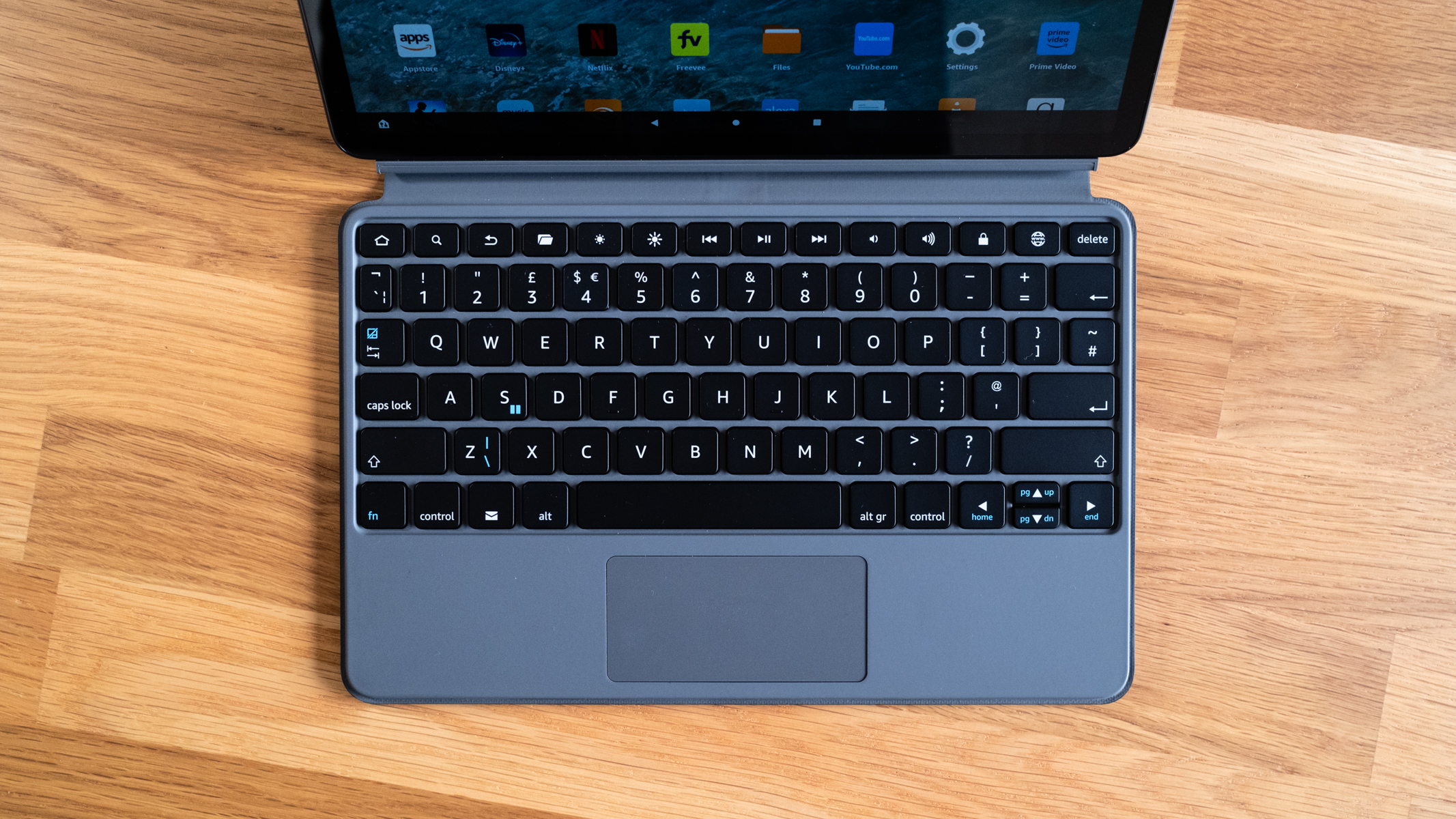
The problem we have here is that we come roaring back to the limitations of the Appstore, where apps are almost blood-boilingly limited; imaging apps such as Photoshop Express, Snapseed, and Lightroom Mobile aren’t available. Not even YouTube or Instagram are available, although there are strangely some apps that can pull YouTube videos through. It’s a shame because the way that the Fire Max 11 performs overall suggests that it could handle these apps with ease. But apps that also have websites can be accessed with the Silk Browser, so it’s not all bad news here.
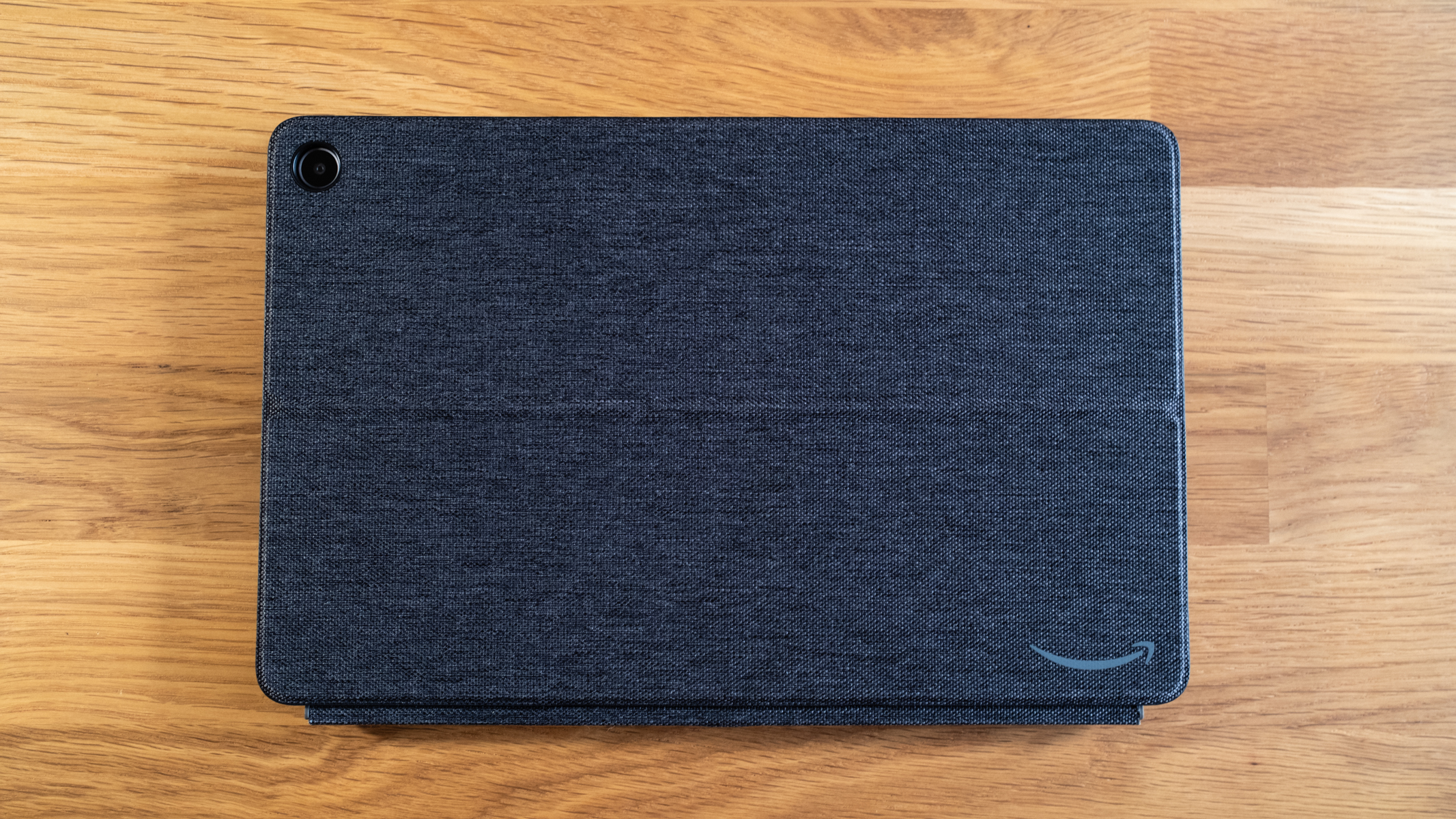
Amazon Fire Max 11: Performance
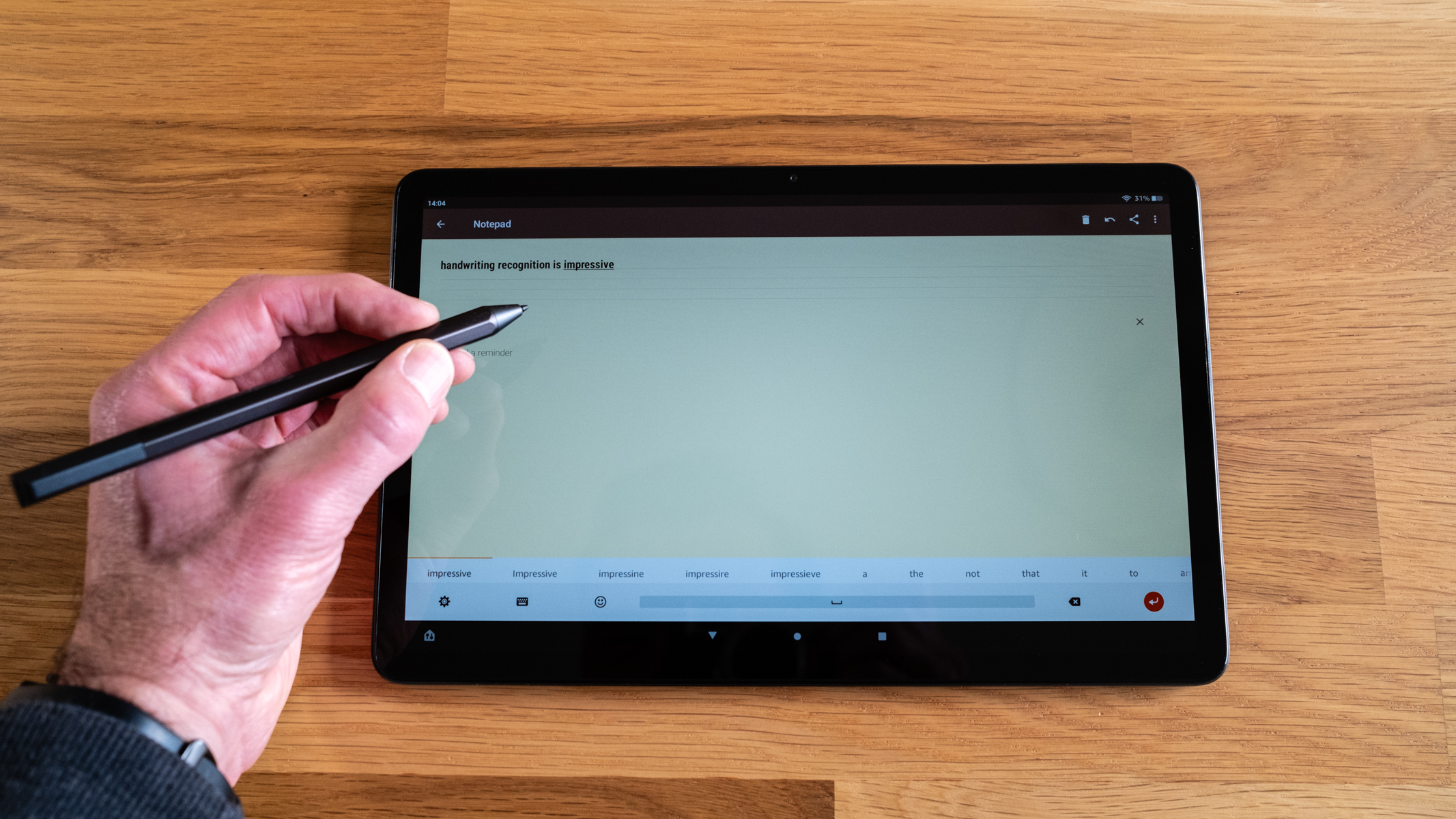
Setting up the Fire Max 11 is quick and easy, but you will need an Amazon account to sign into the device rather than a Google account. If you don’t have one, you can sign up during the set-up process. Within this process, you connect to your home WiFi, opt for photos to be shared to Amazon Photos and activate Alexa etc. It’s pretty much a run-of-the-mill set-up, but once you’re in you have incredibly easy access to your Amazon Account.
In use, the Fire Max 11 provides a pleasant and streamlined experience thanks to the octa-core processor with two Arm Cortex-A78 up to 2.2Ghz and six Arm Cortex A55 up to 2Ghz. RAM is pitched in the midground at 4GB, which is less than flagship smartphones these days, but this combined with the processor showed no signs of weakness during what you would call average use. There were no slowdowns when running multiple apps and navigation was smooth, which ultimately provides a positive user experience.



The front and rear cameras are extremely basic with automatic controls and both feature low-resolution 8MP sensors by today’s standards, with the ability to capture 1080p video. The rear camera has autofocus, while the front camera which is most likely to be used for video calls is fixed focus. The front camera is arguably the most useful of the two with video calls in mind, although it certainly doesn’t hurt to have both front and rear cameras, even if they are extremely basic and low-resolution.
Battery life is advertised at up to 14 hours on a full charge, and during what I would consider to be average use, I was able to get a week’s use out of a single charge. The Fire Max 11 was left on standby when not in use, and I watched a couple of movies on Prime, watched a few YouTube videos, did lots of web browsing, wrote emails and made notes using the Stylus Pen. I tried to integrate the tablet into my daily routine as much as I could alongside my computer and phone, and it did prove useful but mainly for comfortable web browsing and entertainment on the sofa. The Keyboard Case was great when typing anything, whether resting the tablet on my lap or a table.
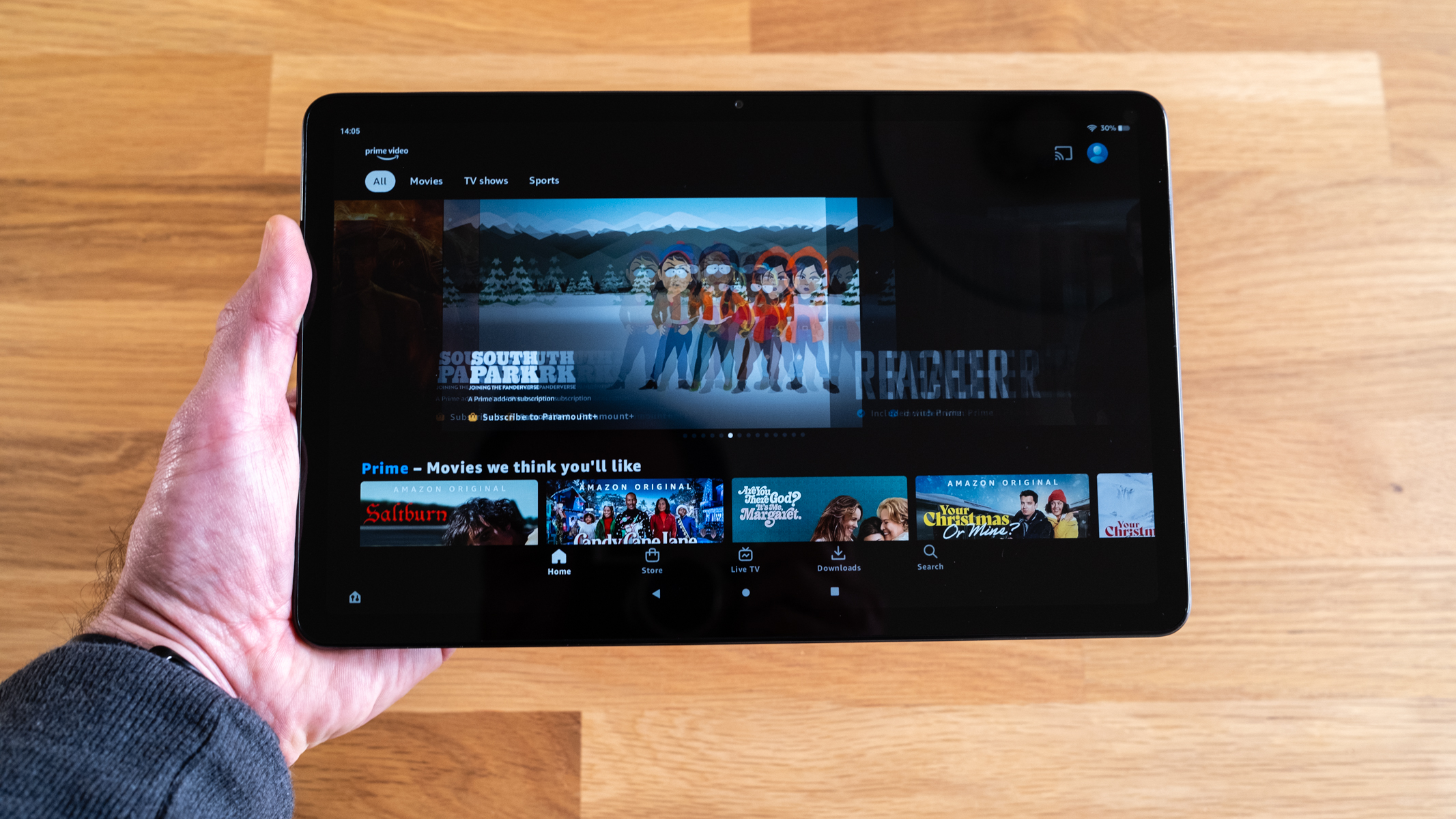
Amazon Fire Max 11: Verdict
The Amazon Fire Max 11 works extremely well as an entertainment device, especially if you’re a Prime subscriber, and even as a productivity device if you opt for the Keyboard Case. Microsoft Office and other Office apps are available on subscription but, unfortunately, Google Docs, Sheets and Slides are unavailable, which are free to use and just as good as any of the paid options for most people.
It’s here that the main problem with all Amazon Fire tablets lies, including the Fire Max 11, that the highly restricted Amazon Appstore offers such a tiny number of apps compared to Google Play. And what makes it even more frustrating is that Fire OS is built on Android, so the two are compatible. Providing access to Google Play alongside the Appstore, in the way Samsung devices offer both the Samsung Store and Google Play, would be the perfect situation for consumers. But grumbles about the Appstore aside, you can still do many things with the Fire Max 11 and if an app also has a website, you can access this through the Silk Browser.
There is a strong lean towards Amazon services that you can’t get away from, but overall performance is great with no noticeable slowdowns or lag when running multiple apps, and the screen is fantastic thanks to the size and resolution. Should you buy it? Well, if you’re happy with the limitations of the app store then you can’t go wrong because it’s a great tablet at a good price. But, if you want or need access to specific apps that are unavailable and/or have no website to access them, you’d be much better off with a standard Android tablet – it’s that simple.








